Groundhogs, also known as woodchucks, are unique animals known for burrowing. These large rodents can reach up to 12 pounds and they’re found across the eastern and central U.S. and into Canada. Unlike some rodents, you can have a groundhog problem without ever seeing the animals as woodchucks spend most of their time in their burrows underground.
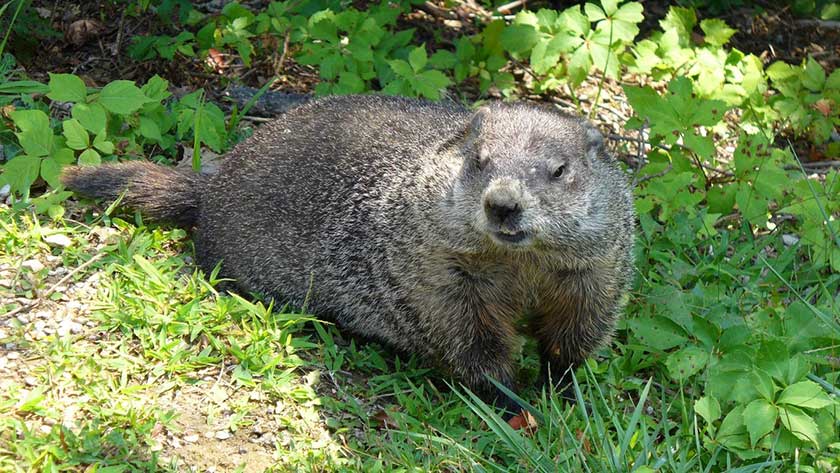
Frustrated by groundhog damage to your garden? Do you have a groundhog living under your shed? Here’s how to get rid of groundhogs in your yard safely and quickly.
Groundhog Appearance and Behavior
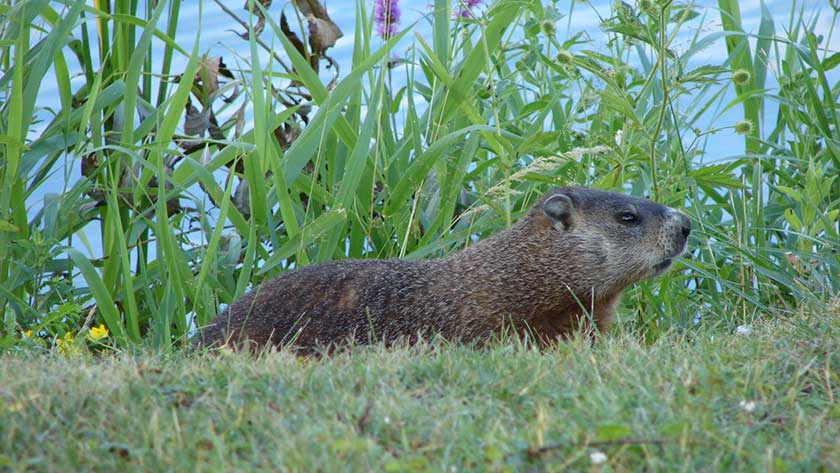
Groundhogs are unique rodents and the largest member of the squirrel family. Ranging from 6 to 12 pounds, groundhogs get around 20 inches long with a 6-inch tail. They have brown fur which may range from light to dark brown with a round body and bushy tail. Woodchucks have very short but strong legs and round eyes on a flat head.
Groundhogs prefer to live in areas where open fields and meadows meet wooded areas. They eat a varied plant-based diet, consuming everything from apples, carrots, and garden vegetables to dandelions, flowers, and tree bark.
You’ll notice groundhog activity between spring and fall when they are active during the day, especially in the early morning and evening when they’re busy gathering food. Woodchucks go into hibernation in October.
Woodchuck Burrowing
If there’s one thing you can count on a woodchuck to do, it’s burrow. Groundhogs are extensive burrowers, building complex underground tunnels and dens in well-drained soil. These rodents use their sharp claws to dig complicated and multi-chambered burrows that are used for nesting, building food reserves, and hibernating. Each den or chamber in a woodchuck burrow has its own purpose — including the bathroom.
Don’t underestimate just how extensive a single groundhog can make its burrow. In fact, groundhogs in Ohio are even credited with an archeological discovery at the Ufferman Site near Delaware, Ohio. Here, active groundhogs have brought many artifacts to the surface thanks to their burrowing, including human bones and pottery.
How to Get Rid of Groundhogs
1. Groundhog Electric Fence
To keep woodchucks from burrowing under your fence, make sure you have a pest exclusion feature at the base of the fence at least 2 feet deep. L-footer style fencing is the most effective barrier against burrowing pests like woodchucks and it’s essentially wire mesh that extends away from the fence under the ground in an L shape. You can also make L-footers yourself with fencing material and wire mesh.
Ideally, footers should be installed when the fence is installed. You can also retrofit an existing fence with L-footers. The Humane Society offers advice for installing L-footer fencing, especially if you plan to retrofit your existing fence. In this case, do the retrofit in stages to make sure you don’t trap groundhogs and other animals inside your property.
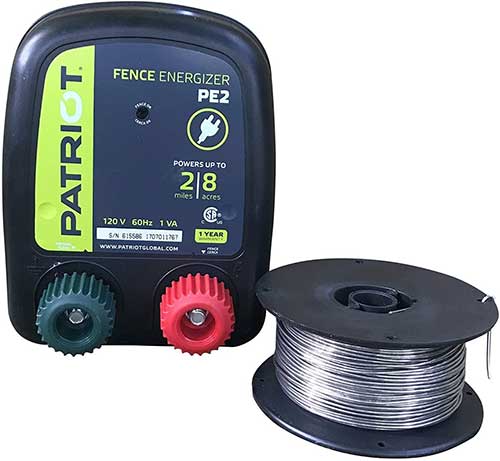
An electric fence doesn’t have to be expensive and it’s easy to retrofit an existing fence to help stop pests (and pets!) from climbing over the fence or, in some cases, digging under. An electric fence won’t kill groundhogs and it’s safe for your pets. You can even choose to install it on the outside of your fence rather than the inside.
Invest in Quality Fencing
Fencing is one of the most effective solutions to keep out a variety of pests — but it’s also one of the most expensive. If you’re already planning to fence your yard or you want to give your existing fence some work to exclude groundhogs, there are several steps you can take.
Groundhogs can get through a fence by climbing or burrowing — they’re great at both. You will want to make sure your fence is impenetrable from either approach.
Start by making sure your fence has no openings or holes wider than 3″. This includes spaces between slats of wood or holes in metal wiring.
To keep groundhogs from climbing over your fence, give your fence an upgrade by attaching horizontal boards at the bottom of the fence. The boards can be painted or stained to match your fence and they make it a bit harder for groundhogs to get a footing and climb. You can make your fence more secure by digging a small ditch under your fence and positioning these boards partially below the surface of the ground.
2. Add New Sources of Food
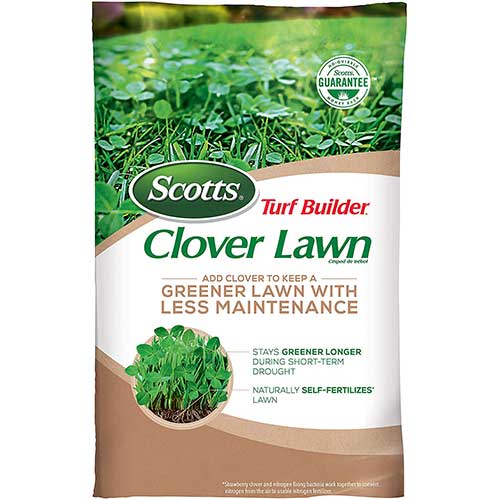
If you have plenty of land and don’t mind sharing some with groundhogs — or you live close to a wooded area and just want the groundhogs a bit farther away — a possible solution may be planting the woodchucks a garden of their own away from your own.
Woodchucks are herbivores that can eat a lot every day, consuming everything from flowers, vegetables, and fruits to bark. Still, groundhogs do have some plants they prefer. Planting their favorite sources of food can be a useful tool to convince groundhogs to move to another area of the property — or into the woods near your home.
You don’t need to spend much money to do this. Here are some cheap plants you can add strategically around your home to lure groundhogs away from your prized plantings, shed, and home.
- Alfalfa
- Clover. This is one of the most affordable and easy solutions as you can buy Scotts clover lawn or ground cover which will establish itself quickly away from your garden.
- Basil
- Parsley
- Zinnias
- Chrysanthemum
- Beet greens
- Green beans
As a bonus, many of these plants can be harvested by you — if there’s anything left after the groundhogs have their share!
Live Trapping a Groundhog
Sometimes the best or only solution for a groundhog is trapping it. You may need to trap the groundhog if it’s burrowing close to your home or under your deck where it can cause serious damage or pose a risk to you and your family.
After live trapping a groundhog, you have a few options:
- Releasing the groundhog away from your property
- Releasing the groundhog on your property after using exclusion methods to keep it from returning to the den
- Euthanizing the groundhog
There are obvious drawbacks to each option. You may not want to euthanize a healthy animal just because it set up its home in the wrong area. Releasing the groundhog far away from your property, on the other hand, all but ensures the groundhog’s death. Live trapping and relocation places the groundhog in an unfamiliar area where they won’t know where to find food, water, and shelter. They’re also in another animal’s territory and may be attacked or unable to escape from predators.
3. Live Groundhog Trap
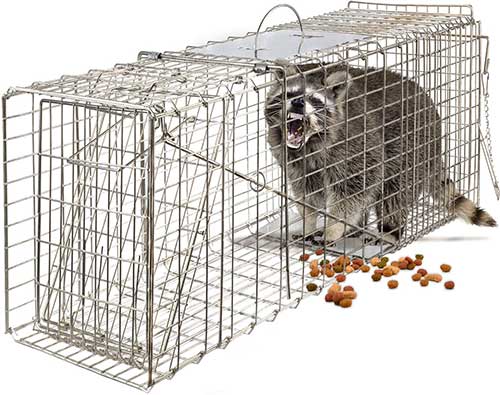
Before you use a live groundhog trap, make sure you check local laws regarding nuisance wildlife. In most states, you do not need a permit or trap groundhogs. There may be specific rules you need to follow when it comes to trapping and releasing the woodchuck, however.
For example, Indiana law allows homeowners and renters to trap woodchucks legally if the animal is causing damage to the property. While you are no longer required to inform a conservation officer within 3 days, you can’t keep the woodchuck trapped for more than 24 hours. You will have two options for disposing of the woodchuck: you can let it go or euthanize it. If you decide to relocate the woodchuck you need permission from the landowner (even for public land) and the woodchuck must be released in the same county.
Many states have similar guidelines but they can vary. Make sure you check with your Department of Wildlife before trapping the woodchuck.
Once you’re ready to trap the groundhog, you’ll find it’s not as hard as you may expect. Set the trap up near one of the groundhog’s burrow openings or an area they frequently search for food like the garden. Bait the trap with something groundhogs love. The best option is cantaloupe, flavorful treat groundhogs have trouble resisting with an odor they can pick up from quite a distance. The best groundhog baits can also include:
- String beans
- Sweet corn
- Strawberries
- Ripe peaches
- Vanilla extract (can be applied to strawberries and other types of bait)
Catching Groundhogs in Live Trap
Make sure the bait is placed behind the trigger plate of your live trap but far from the walls of the cage. Wear gloves while adding the bait and handling the trap to avoid transferring your scent.
Once the groundhog is trapped, remember that it’s very frightening and may try to bite or lash out. Handle the trap carefully when relocating the groundhog by covering the trap with a cloth and wearing heavy-duty gloves. When you’re ready to release the groundhog, place the trap on level ground with the door facing away from you. Stand behind the cage and manipulate the door mechanism, allowing the groundhog to run straight out and away from you.
Related Article: How to Get Rid of Skunks
4. Install a Garden Fence
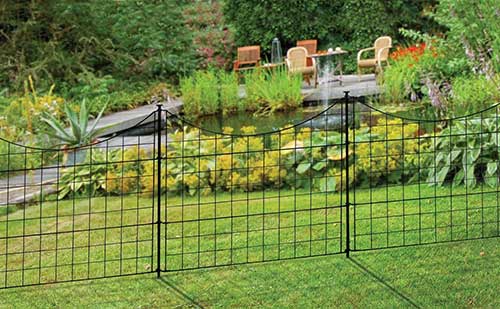
Have woodchucks developed a taste for your vegetable garden? Or are you interested in protecting your prized plants from woodchuck damage? The good news is there are several ways to get rid of groundhogs in a garden and it all begins with fencing.
The first step is installing fencing to protect your garden from groundhogs. You’ll need to consider that woodchucks can enter your garden in three ways: they can burrow into the garden, walk right in, or climb over fencing.
There are a couple of options for protecting your garden with a groundhog-proof fence.
The first option is using chicken wire that’s 6′ high and installed with 5-foot posts. The chicken wire also needs to be buried at least 10-24″ into the ground. At the top of your fence leave the last 12 inches unattached to the posts and bend the chicken wire outwards to prevent a groundhog from climbing up and over.
Another option is installing an electric fence and reinforcing with L-brackets under the ground. This option means you won’t have a high, ugly fence over your garden and you’ll still have protection from burrowing.
A good option for electrifying a fence around your garden is the Patriot PE2 electric fence. This kit is DIY friendly and allows you to build your own short chicken wire fence and electrify it by running the aluminum wire around the base.
5. Repel Groundhog’s From Garden
If you can’t build a fence around your garden and woodchucks are a concern, there are a few other options to consider:
- Add plants that repel woodchucks. This won’t keep groundhogs away from delicious, ripe fruit and tasty vegetables but you can probably protect flower beds or at least discourage groundhogs by adding plants they really don’t like to your landscape. Crown imperial fritillary (F. imperialis) and gopher plant (Euphorbia lathyrus) are reported to repel groundhogs. Pennsylvania State University offers a long list of groundhog resistant plants that they are unlikely to eat including hummingbird plants, cut flower garden plants, herbs, vegetables, and more.
- Let your dog walk through the garden area. The scent of your dog may help deter groundhogs.
- Try groundhog repellents. Unfortunately, there aren’t really any products that can effectively deter woodchucks — but they may help to convince a groundhog to find a tastier meal somewhere else. Woodchuck repellents are more likely to work before a woodchuck actually moves into your yard and starts burrowing, at which point they’re committed to living in your yard unless you go to extreme measures. Potential groundhog repellents include coyote or fox urine, red pepper flakes, Tabasco sauce, garlic, lavender, and even human hair. You can make your own groundhog deterrent spray by mixing water, a bit of dish soap, and Tabasco sauce plus crushed garlic cloves into a spray bottle. Spray around the garden and on plants, especially plants that have been hit by groundhogs in the past.
6. Seal Around Decks and Sheds
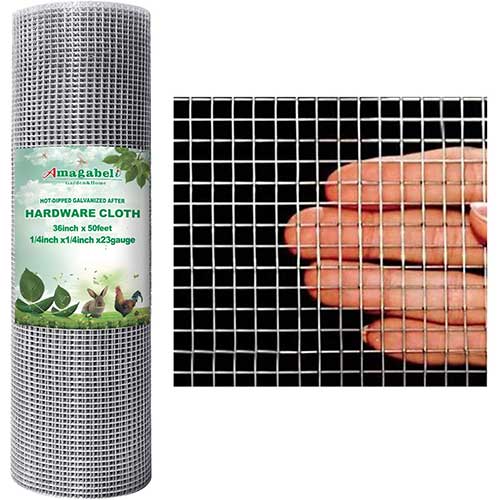
What’s one of a groundhog’s favorite places to hideout? Under your shed or deck where they have cover while entering and exiting their burrow. During the spring, you may see a groundhog slipping under your deck, porch, or shed but not emerging as they’re entering their extensive tunnel system.
This is one of the worst places to have woodchuck activity as their burrowing can damage the structural integrity of your deck or foundation. The trick to kicking them out is first closing the hole then installing a barrier so they can’t get under the porch again.
You can use an expanding tunnel fill product or hardware cloth to close the hole under your deck. Next, keep the woodchuck from accessing under your porch or shed by sealing off open areas. Make sure you use galvanized steel mesh that’s installed well below ground level to keep the woodchuck from burrowing back under the deck.
How to Fill a Groundhog Tunnel
When you’ve evicted woodchucks from your property, you’re left with the extensive tunnels they leave behind. There’s a right way and wrong way to handle groundhog holes as the tunnel systems, even when left undisturbed, can collapse with heavy rainfall or be taken over by another groundhog.
Groundhog burrows should be left alone until the babies are old enough to leave, which usually happens around early July. If the opening of the burrow is in a dangerous location where it poses a trip hazard, you can mark it with a flag until the young have left.
After mid-July, you can evict the groundhog with the methods above or stuff garlic oil or clove oil-soaked rags into every hole. The soaked rags will give off a pungent odor that helps convince the woodchuck to leave. Another solution is using gas cartridges to quickly kill or evict the groundhog.
The next step is filling the groundhog holes. This will help prevent another groundhog from claiming the burrow later. There are two effective ways to fill groundhog holes:
7. Expanding Tunnel Fill
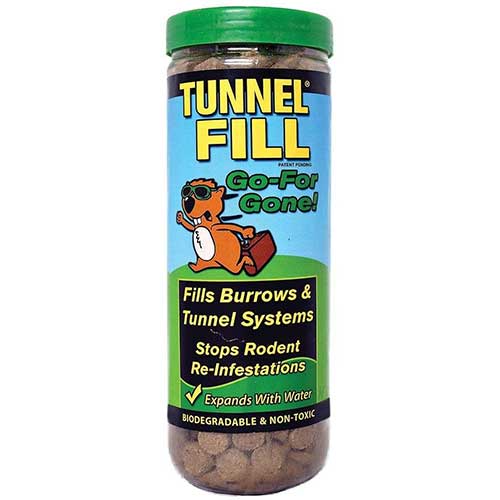
One option for filling groundhog holes or tunnel openings is a product called tunnel fill. This product, which resembles pellets, is an absorbing material that expands to many times the original size when it’s combined with water. You simply need to pour the expanding tunnel fill into the groundhog holes around your property and add water: the tunnel fill will expand to fill the opening.
Tunnel fill even contains ingredients that naturally repel digging in the future to reduce the risk that another groundhog or animal-like chipmunks will take over the abandoned burrow. By filling the holes, you can prevent the tunnels from simply collapsing over time from foot traffic on the surface and rainwater.
Related Article: 7 Best Ways to Get Rid of Moles
8. Cover Holes with Hardware Cloth
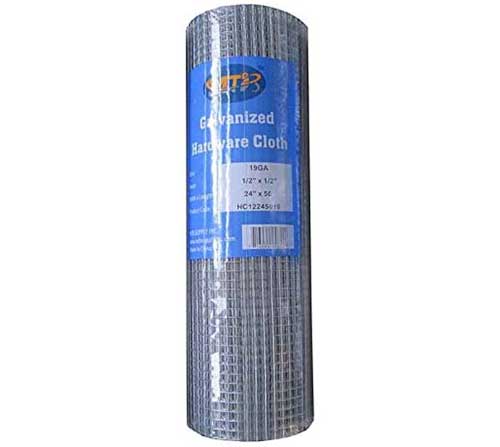
An alternative solution is simply covering all of the openings to the burrow with buried wire mesh after the groundhog is evicted. Remember that the extensive burrow the groundhog has built — possibly over a period of years — is a hot commodity and another groundhog or other burrowing animal may want to take it as their own home in the future. Covering entrances to the burrow makes it less likely that other pests will move in. You can simply excavate each opening of the burrow a bit to close the entrance with half-inch hardware cloth or aluminum screening.
9. Gas the Groundhog Out
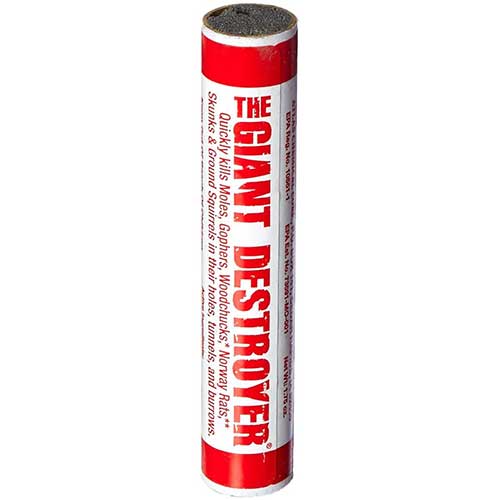
Have you discovered a groundhog burrow in your yard? One potentially permanent solution is to gas the groundhog out. Gas pest bombs from Atlas are effective at evicting animals from an underground burrow or killing them if they can’t get out in time.
Atlas gas cartridges are easy to use but you’ll need to follow the directions carefully. First, make sure you identify all of the openings to the groundhog’s burrow. There are probably more than one and maybe up to half a dozen, depending on the size of the burrow and how long the groundhog has been living in your yard.
Next, make sure the groundhog is actually in the burrow before you light the cartridge. Groundhogs are most active early in the day and the afternoon. Just before nightfall, there’s a good chance the groundhog is home.
To evict the groundhog, cover all openings to the burrow except one then follow these easy steps for the best chances of success:
- Practice placing the gas cartridge in the burrow opening a few times to make sure you have good clearance.
- Use BBQ tongs to hold the cartridge and keep it as far from your face as possible.
- Have something handy to cover the opening once you’re ready. Because you have just seconds to cover the hole, the best thing to do is add some rocks to a large bucket and keep it right by the burrow entrance.
- As soon as you light the fuse, hold your breath and place the cartridge in the burrow opening. Quickly cover the hole with the weighted bucket.
- Leave the cover on the hole for several hours or overnight.
10. Use an Ultrasonic Groundhog Repellent
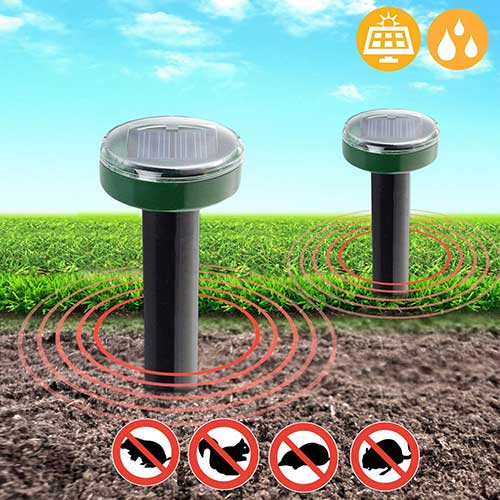
An ultrasonic groundhog repeller may work in the short-term but it’s simply not a long-term solution. That’s why we typically don’t recommend them.
When you want to know how to get rid of groundhogs in your yard, you’ll probably hear or see ultrasonic repellers that can be staked into the ground. These ultrasonic pest control devices claim to chase away moles, gophers, groundhogs, and other burrowing animals but the truth isn’t so simple.
Once a groundhog has gone to the trouble of creating its burrow and it has access to food, it’s unlikely to move even in the face of annoying vibrations. The success of these devices also varies a great deal from one animal to the next. One woodchuck may turn away when it detects the vibrations from the device but the next won’t be so troubled.
Groundhogs and other animals tend to get used to annoying noises and even what appears to be a threat like an owl or hawk decoy, for example. You may notice results initially but ultrasonic devices won’t keep groundhogs away for long without other methods.
If you do decide to use an ultrasonic groundhog device, make sure you use several other exclusion and prevention methods or you’ll just be throwing away your money.
To use the ultrasonic ground stakes with best results, make sure they’re installed no further than 100 feet apart in areas prone to groundhogs — but with plenty of sunlight if you use a solar-powered device.
Related Article: Do Ultrasonic Pest Repellers Work
11. Clear Food from the Yard
Do you have fruit trees or a thriving vegetable garden on your property? Woodchucks can smell these sources of food from quite a distance and they will be drawn to your property. Ripe fruits and vegetables are at the most risk of attracting rodents and being stolen.
As with any pest, eliminating food sources is essential to preventing or getting rid of an infestation. Pick vegetables and fruits as soon as they’re ripe and don’t allow them to rot on the ground. Rake regularly to keep your yard free of ripe fruits that might have fallen from trees.
Even though groundhogs are herbivores and aren’t known for going through the trash like raccoons, it’s still a good idea to make sure the area around your trash is clean and sealed. Double bag food scraps before throwing them away to prevent strong odors that may attract pests.
12. Stay on Top of Mowing and Trimming Shrubs
Like most rodents, groundhogs like areas with plenty of cover to hide from predators. Woodchucks also like to make the entrances to their burrows in areas with great cover to disguise their home. Eliminating cover around your yard probably won’t be enough to encourage a groundhog to move on if it’s already built a comfortable home near food — but it definitely makes your property less appealing to groundhogs.
These tips can help you prevent groundhogs in your yard and other pests like chipmunks:
- Cut back shrubs and bushes until their leaves are no longer near the ground and they aren’t impenetrable
- Cut grass regularly and keep it short
- Don’t leave piles of leaves or wood around the yard. Woodchucks love to burrow homes near piles of debris.
13. Maintain Moist Soil
Groundhogs search for soft, loose, and fairly dry soil that’s easy to dig through to make their burrows. The last thing a groundhog wants is wet or saturated soil which makes it almost impossible for them to create the extensive tunnel system they need. A simple yet effective solution to encourage groundhogs to find a new home is watering frequently to keep your lawn and ground moist.
Of course, keeping the ground pretty moist throughout the summer may not be possible or affordable. You’ll need to check if you have any municipal watering restrictions in your area as water shortages can force limits on lawn watering in the summer.
If you can’t keep sprinklers on for an hour or more a day, the next-best solution is thoroughly soaking areas that might appeal to groundhogs. This includes areas with good cover like dense shrubs, near bushes and fences, and under sheds.
Why Groundhogs Are a Problem
Groundhogs, unlike their squirrel cousins and other rodents, don’t spread disease and they’re only active for part of the year. So, what’s the big deal with a groundhog or two living on your property?
Groundhogs can cause extensive damage thanks to their non-stop tunneling behavior. In addition to raiding your garden, their tunnels can collapse in your yard and they can even cause structural damage to your home, shed, walkways, and fencing. These large tunnels aren’t visible from the surface unless they collapse but they’re large enough to break a tractor axle and damage surrounding structures.
Just how large are groundhog burrows? A single groundhog will burrow 2 to 4 feet below the ground and create a network of tunnels and rooms anywhere from 8 to 60 feet long — with multiple entries and exit points. Each exit is about 12 inches wide with a mound of excavated dirt.
Because groundhogs hibernate deep underground for the winter, the best time to exclude or evict groundhogs from your yard is the middle to end of summer. If you wait too long, you won’t have another chance until next year.
Ready to evict a groundhog from your property? Here are the steps to take to make your lawn and garden inhospitable to woodchucks and force them to move on to a new home.
Signs You Have a Groundhog Infestation
A groundhog problem can be difficult to recognize as you may not see the actual groundhogs — just the damage they leave behind. Still, there are some signs you can watch for that indicate the animal making tunnels or digging in your yard is a groundhog.
- You have damage to crops, wood, and branches. Look around your yard and garden for evidence of a groundhog. You may notice teeth marks around 1/2″ wide on plants, low tree branches, and wood as well as hollowed or damaged vegetables and fruits.
- You see mounds of dirt in front of holes. Groundhogs often burrow under porches and sheds, leaving a tell-tale mound of dirt in front of the tunnel entrance. Groundhogs are always working on their tunnel network and making expansions which means they need to get rid of dirt fairly often.
- You see signs of digging near a porch or shed. Groundhogs spend most of their time excavating tunnels and dens underground. They tend to gravitate toward natural cavities that offer good cover, like a shed, but they will continue to burrow.
- You see evidence of many tunnels or openings. Because woodchucks excavate many tunnels with lots of entrances and escape routes, it’s not uncommon to see many entrance holes and even signs of collapsed tunnels around your hard.
- You hear distinctive groundhog sounds. Woodchucks make very distinctive noises. In addition to the normal squeaking bark you may hear from a groundhog like this, the groundhog can also make a very high-pitched whistling noise. This has earned them the nickname “whistle pig.”
- You have worn or gnawed trees and siding. This can be a sign of scent marking or areas where the groundhog was chewing to wear down their incisors.
Related Article: 12 Best Ways to Get Rid of Racoons
My name is Christine and I’m living in Southwest Ohio where I was born and raised after a decade spent living in Southern California.
While I loved working as a Pest Control Technician in Western Ohio, I did not enjoy the hours.
I decided to find a new career and now I work as a writer and help others find solutions to their pest problems online.
In my free time, I enjoy traveling and going to as many metal concerts as possible.

Hello, I’m desperately wanting a groundhog from under my porch to move on. I am not wanting to harm it in any way. We do have a wooded area across a small road from our porch. It has several holes I see for entering and exiting. Two on the porch area and another under the nearby shed. I was wondering if he will move on come Oct? If so how can I know and close these points up after or if it truly moves to a different winter home?
Thank you
Hi,
We’ve just bought a house with groundhogs. We paid to have a “critter guy” to trap before we moved in. He caught 2 and was trapping for 10 days. Any suggestions for what to do at this point. Thanks for your help.
We have used gas bombs to get rid of the groundhogs under porch. We are going to pour a mixture of sand and portland cement to fill the holes. The sand will seek the lowest point and the cement will harden. Check back to check progress.